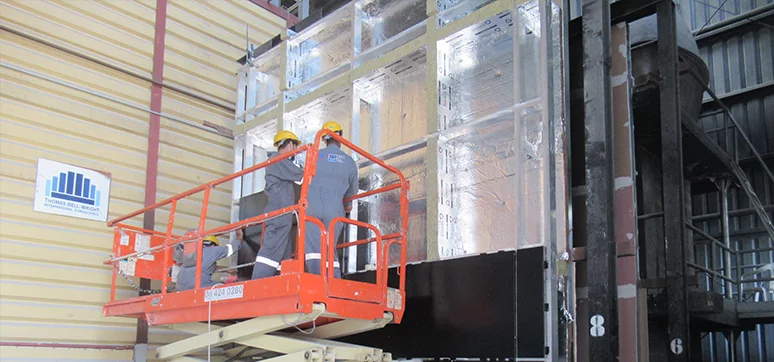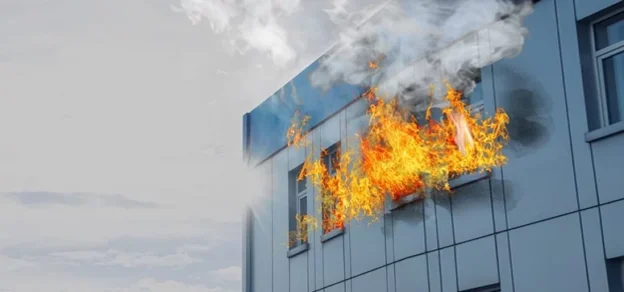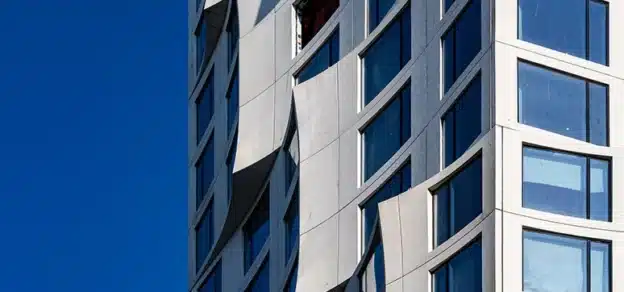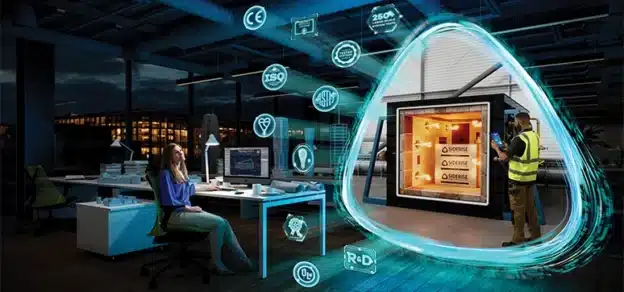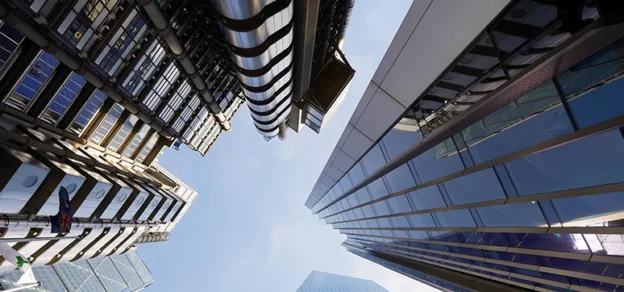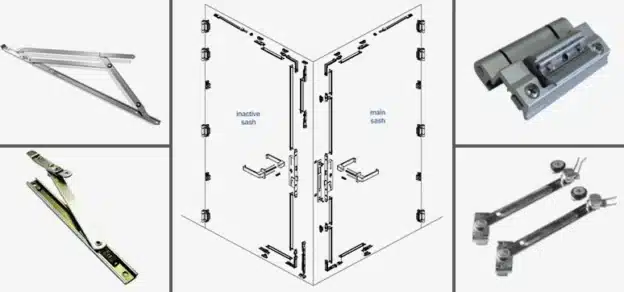Mock-up testing consists of constructing a complete representation of something and testing it against certain practical possibilities. The size could vary, but often the aim is to get closest to real size to understand all practical aspects. In order to assess the performance, quality, safety and other attributes of anything to be built, it is common to do such mock-up tests. The building envelope industry is most familiar with these tests which are done to evaluate air or water ingress. These tests are often performed under AAMA (American Architectural Manufacturers Association) or CWCT (Centre for Window and Cladding Technology) standards and are also called Project Mockup Unit (PMU) tests and have several names.

Often non-destructive; various sequences of applying load, movement, weather cycling, etc. are carried out to create representations of real scenarios and what is evaluated is the performance of the complete building envelope assembly for what is called “weather tightness”: Air, water, hot/cold weather, humidity, etc. Mock-up testing often has two aims: One is the evaluation of material ‘selection’ and two is the assessment of the ‘design’ and ‘how’ the materials come together.
This article aims to talk about another type of mock-up test which is similar in intent to the weather-tightness mock-up tests but is different. The mock-up ‘fire-tests’ are destructive tests, to begin with. Unlike air or water ingress tests which could allow a contractor to rectify or patch up; a mockup fire test is not very forgiving. There is only one chance to correctly select appropriate materials (before the test), their positioning, volume or size of the materials used and not to miss out on the design and the accuracy with which the same gets installed. Once the test is completed; any changes to be evaluated will require the expensive test to start from scratch!
MOCK-UP FIRE TESTS
There are a large number of test methods published in the world which are used to mock-up a fire on the building envelope. Countries, regions and expert groups have come up with their own view of which potential fire risks should be mocked up to help assess which combination has the minimum fire risk. Hence such mock-up fire tests, like any other mock-up tests, are conducted before installations are done.
In Table 1 you can see a partial list of the mock-up tests for assessing fire behaviour published at the 2016 Fire Safety Conference in Sweden. The current list of options for evaluating fire behaviour would have changed but this helps bring out the spread of tests that get developed and are used to assess the risk which is essentially the same. The American test standard of NFPA 285 currently comes across as the most robust methodology from the point of view of doing a large number of tests; the British method of BS 8414 and its versions are also used in many parts of the world. Some of the examples shared in this article are from mock-ups built up using NFPA 285 test method.
BUILDING A MOCK-UP FOR THE FIRE TESTS

A fire testing laboratory gets to witness first-hand how cladding manufacturers and contractors build on their previous experience to tweak the design of their systems. Experienced contractors building a mock-up, already know what parameters are measured and where. Ideally, the test is aimed at a mock-up of exactly what is to be built at the site or a worst-case scenario of what will be built at the site. Such tests when conducted specifically to the project often involve several third-party consultants who are reviewing and ensuring that the mock-up is representative. Picture 1 shows how a mock-up is getting built up for a test to be conducted as per the NFPA 285 test method. Experienced and well-accredited laboratories spend considerable time overseeing and mapping minute details of the installation process. These are reproduced in great detail in the test reports and form a key part of the result of a test.
WATCH OUT FOR THESE IN THE MOCK-UP FIRE TEST REPORTS
The biggest advice of a testing lab with an experience in hundreds of large-scale mock-up tests is that the test result of a pass/fail is only five per cent of what the test report stands for. And the main reason to say this is because what is tested is not a batch-produced product coming out of an assembly line. It is an assembly of a large number of products brought together in specific dimensions and proportions, (often) by expert installers.

The traceability of some of these products could be defined in the test reports. So, there is a large amount of information that needs to be understood and correctly utilised when taking decisions of allowing a certain installation on the basis of a test. As these tests are not material tests; the users of the test reports need to look at the choice of every material, spacing, positioning, combination as well as installation methodologies. Look here at some of the examples of how some installations can get done in the lab. And if you don’t read through the report completely, you will probably not realise well enough what was really tested.
In-depth analysis after each fire test enables expertise to get honed based on the experiences. For instance, temperature rises based on thermocouples placed within the cladding are investigated to check where the design can be improved. Let us look at a few examples where contractors sometimes adapt their installations to improve their performance to comply with the test requirements.
A. PROTECTING THE WINDOW OPENING

The window opening is often confusing for contractors, as there are cases where the final project may not have a window opening. A standardised mock-up test method will always have a lot of time and effort spent by contributors to the standard to evolve a specific set-up and flow of tests. So, there are valid reasons for having a window opening in such a test method. When a fire actually breaks out in a building where there are no windows, a window could get created: by incidence or accident or a weaker section could just act as an opening.
Picture 2 shows one of several typical ways used to protect the window opening facing a unique fire situation created during the fire test. (The June issue 2019 of this Journal covered the test method in detail) The users of these test reports must be careful in understanding and assessing how the window opening has been protected and make sure there is a configuration in the project which is getting assured based on such a test report.
B. USE OF FIRE BARRIERS
As per the NFPA 285 test method, there are no requirements mentioned to use horizontally oriented fire barriers at floor slabs and cladding junctions. Though, the regulations in the UAE Fire and life safety code do make it mandatory to do so. It is also good to know that the NFPA 285 test method also states that no material shall be used to fill the air cavities, if any, or further cap the header jamb or sill area of a window opening. However, if the fire barrier is used along a window opening as shown in Picture 2, it is acceptable to test with such changes provided the same configuration is replicated at the site.

As per the experience of some contractors, and several tests conducted in specific configurations, this helps to arrest the vertical fire spread along the cladding panel joint at the centre. This is the portion of the cladding where the fire spread is most expected. Attention needs to be given to ensuring such details are installed in the same way at the project as well.
C. PANEL JOINTS
It is established that the panel joint gaps are often most susceptible to the propagation of flames. It is common to see contractors fill the panel joint gaps with fire-rated backer rods for the mock-up of the tests (See Picture 3) before applying a sealant. This also helps in delaying the spread of fire to the cladding core compared to when the entire panel joint gap is filled with sealant alone. However, the filler material has to have an assured fire behaviour, because if combustible backer rods or filler materials are used, it will aid the fire spread and the temperature rise resulting in the possibility of the cladding assembly not being compliant with the standard requirement.

Picture 4 shows the interior of the cladding system after the cladding panels were dismantled after the test was completed. This was a combination of fire-rated backer rods used at the panel joint gaps and fire barriers used at the window-opening jambs.
The results show how the fire spread was arrested and improved the performance of the system in terms of the standard requirements. It should be noted that having such details does not mean these will lead to a test that passes. This said, there is also evidence of contractors leaving the joints open without a filler as shown in Picture 5 which also aids in the arrest of the propagation of fire during the test. The aim is for users of test reports to understand the knowledge and importance of aspects that need to be checked at the project site
EFFECTIVE USE OF MOCK-UP TEST REPORTS
Mock-up test reports have a significant difference from product test reports. Understanding this well makes the best starting point for the better use of mock-up test reports. A mock-up test report assesses the use of appropriate materials (Material Selection), their positioning (Design), the volume or size of the materials (Design) and the accuracy with which the same gets installed. This is done to establish that all these are correct BEFORE installation is started. The end goal of every test is to provide a means that will help ensure and assure repeatability of performance.

Reading correctly into mock-up test reports and keeping in mind that there is a need for a mechanism to assure the same materials, designs and workmanship is repeated. And the test reports have all the information needed to create a check and assure these. Use them wisely.
Co-Author:
Kevin Zachariah holds a bachelor’s degree in mechanical engineering and an MBA from the University of Strathclyde. He is a senior fire testing engineer, working with Thomas Bell-Wright International Consultants for the last six years. He has conducted over 300 resistance-to-fire and fire propagation tests, through which he has gained immense technical knowledge of relevant testing requirements and fields of application with respect to site conditions, building codes, or industry norms in product development.
